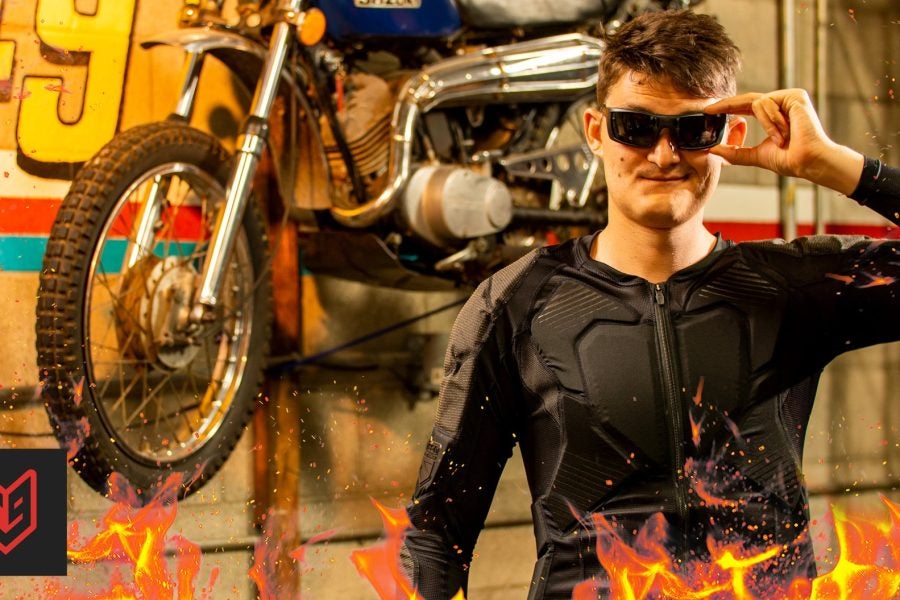The Internet has disrupted traditional publishing in the world of “real” journalism and the world of motojournalism alike—look at the list of print moto-mags that have folded in the past decade. Twenty years ago, who woulda thunk that Cycle World would ever stop printing?
But, it hasn’t stopped there. As the web offers new platforms, we’re now seeing creators who master these platforms serving as major disruptors to the original online voices. There’s no better example of this than RyanF9, the face of FortNine’s popular YouTube channel.
First, a bit of background: FortNine is a major Canadian motorcycle/ATV online retailer for parts and accessories, roughly analogous to Revzilla. For years, Revzilla published video advertorial for its products, and FortNine started doing the same. But then, it branched out. Unlike Revzilla, which combined occasional videos with a lot of written-word stories, FortNine focused mostly YouTube videos that went far beyond in-house product reviews. FortNine started publishing oddball destruction testing, bike reviews, travelogues and other YouTube content that all featured one guy: RyanF9.
So who is RyanF9, and what’s his secret to becoming a YouTube moto-star?
The answer: He’s a guy who came out of nowhere, and it was all pretty much an accident, at least at first.
Ryan (his real, full name is Ryan Kluftinger) was a university student in Montreal when he started blogging for FortNine in its early days, when it was called Canada’s Motorcycle. He wasn’t a racing star on-road or off-road, not a professional wrencher or anything like that. But when the company decided to venture onto YouTube, they needed someone to write the content. Why not that kid who’s been doing the blogging? Thus was born the career of RyanF9.
“As a blogger, I was just the closest thing, they had to a YouTuber, or a video guy, so they asked me if I want to do it, and I was happy to give it a try,” Ryan says. “We never had like grand plans for the YouTube channel. It was a bit of a content marketing exercise and a bit of an SEO exercise.”
It’s a marketing exercise that certainly paid off; right now, the FortNine YouTube channel has 1.38 million subscribers. It’s one of the most-watched motojournalism channels in the world, drawing fans from far beyond its Canadian homeland. Ryan is still the face of the channel, years after the launch, delivering a mix of how-to advice, ride reviews and industry observation with a strong dash of smart-alec attitude. It’s like a television writer for early ’90s Simpsons episodes decided to tackle motorcycling instead of cartoons. And, it works.
Well, not for everyone. In the early years, many inside and outside the industry didn’t take the channel or its fresh-faced presenter seriously. It took a while to earn the trust of the manufacturers, to get bikes to test. And, when that happened, not everyone liked the results, as Ryan always calls it like he sees it. That means some manufacturers won’t lend bikes to FortNine anymore.
But Ryan’s OK with that; he’s keen to keep the channel’s integrity strong. For instance, he says he’s not interested in doing press launches. Not that he’s against testing a borrowed bike—he just wants to fend off accusations of conflict of interest: “If you can get us a bike, we’d love to do something with it. We want a week with the machine and we don’t want any free stuff.”
This attitude is pretty noticeable on the YouTube channel, which often features old, beat-up bikes instead of shiny, new machines. That’s because these bikes are often purchased out of the show’s meager budget. It’s a different approach than many motorcycle shows, and it results in content you won’t find anywhere else.
The difference goes beyond simple new-bike-vs-old-bike subject matter. FortNine’s videos have a goofy, fun quality, with challenges and experiments that draw on Ryan’s brainy university background (he studied physics), with a good dose of deconstructionism mixed in. It’s a mixture of Top Gear with a college lecture. Sometimes they take the shape of a video essay, the growing online-specific format that allows the presenter to go argue an advanced thesis, instead of just chirping for lolz. Perhaps the best example is the following observations about Harley-Davidson:
Mind you, Ryan’s not a hater; he spends plenty of time with a Dyna in later videos. See, that’s it: This channel shifts gears faster than Ronnie Mac gunning for a holeshot. This FortNine video about tastefully, practically customizing this cruiser shows the channel really is about motorcycles of all kinds:
Still, watch enough videos and you can tell Ryan’s heart is in the dual-sport/ADV world, and no wonder. That’s where he started, as a kid ripping around on an old Honda XR100 in the Canadian wilderness. The channel doesn’t really future pure dirt bike content, but there’s a lot of ADV riding.
What’s next for the channel? Currently, FortNine has an ad on LinkedIn for a videographer, so maybe we’ll see some changes, as Ryan’s collaborator behind the camera had a big influence for the past few years (there’s a noticeable change when the videos shifted their production from Montreal to Vancouver, and Aneesh Shivanekar came on-board for videography and editing). No doubt changes are ahead, but we can at least expect the same philosophy of creation as before.
Ryan says his rule is, if he makes a video, it has to add something to the conversation. He doesn’t want to duplicate other people’s work. He’s happy to make a sharp point that disagrees with commonly accepted knowledge, and he’s willing to deconstruct riding myths, hocus-pocus beliefs about gear, and even mess with the traditional review formulas that moto-mags hold sacrosanct. FortNine’s ride reviews, usually a straight-up process for most outlets, offer a storyline, not just facts. See the TW200 video below for an example:
So, no matter who Ryan’s next video partner is, we’d expect the core of the channel to stay the same—they’ll continue to find new ways to tell stories. As Ryan himself says: “If you want to make content for YouTube, don’t make something that’s already out there. You have to make something that adds value to that space. Make something that wasn’t there before. I think that’s the biggest thing for content success.” It certainly seems to be working for FortNine, at least.







